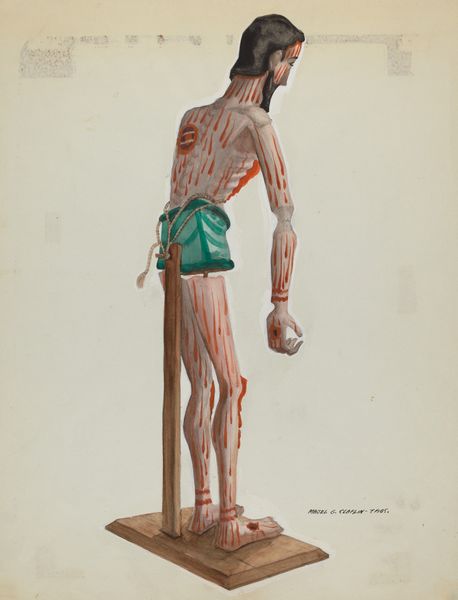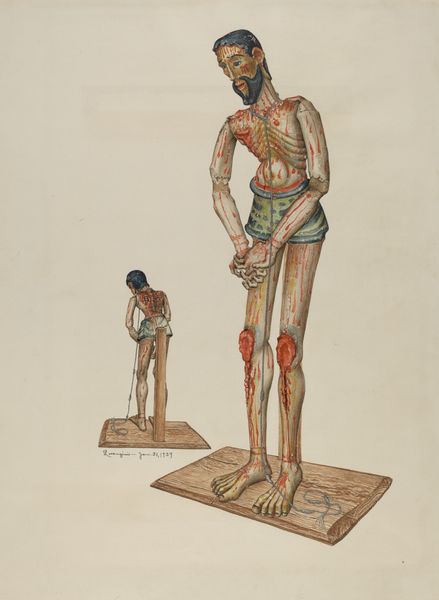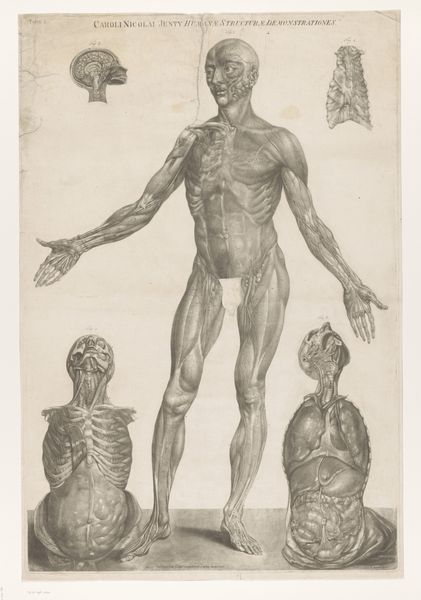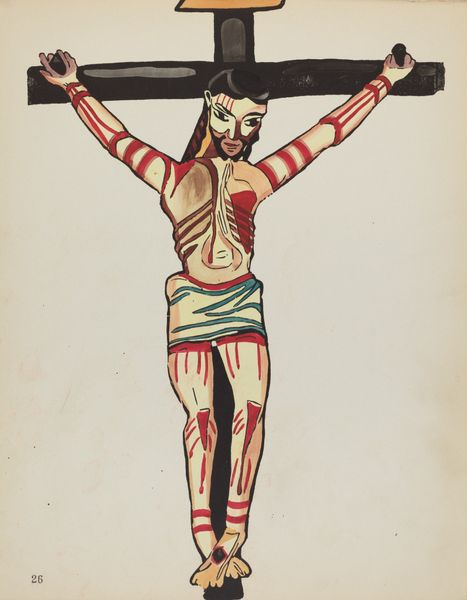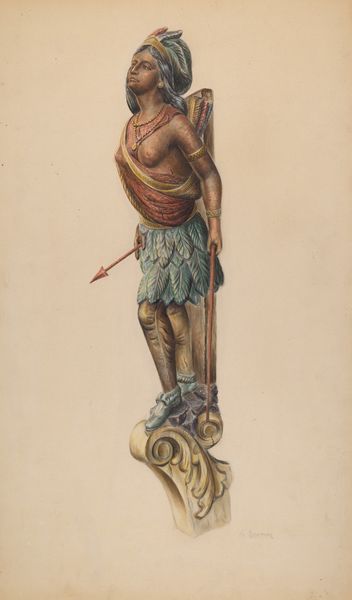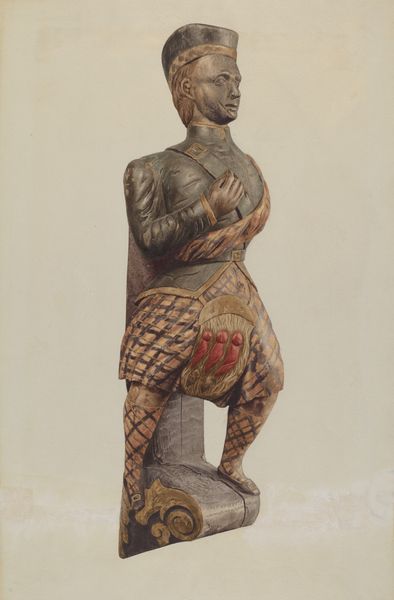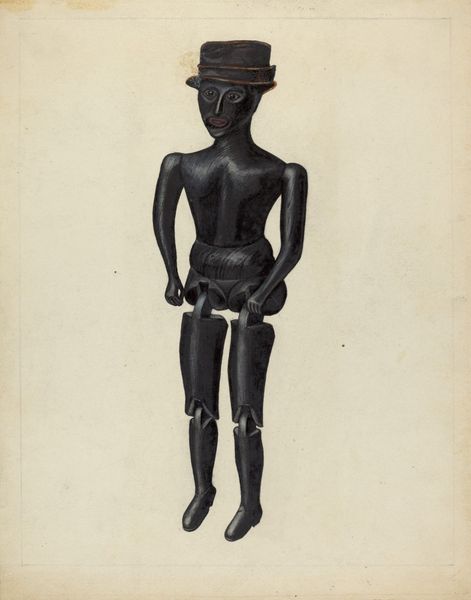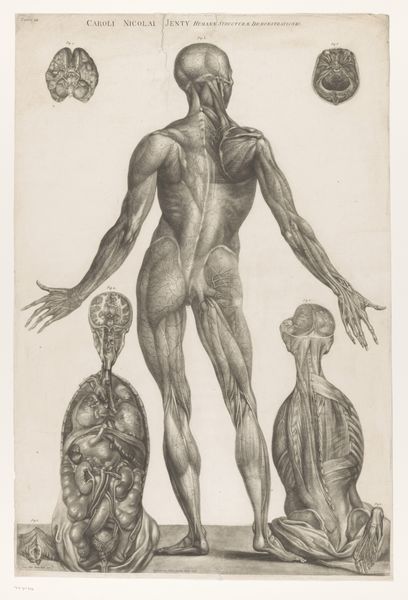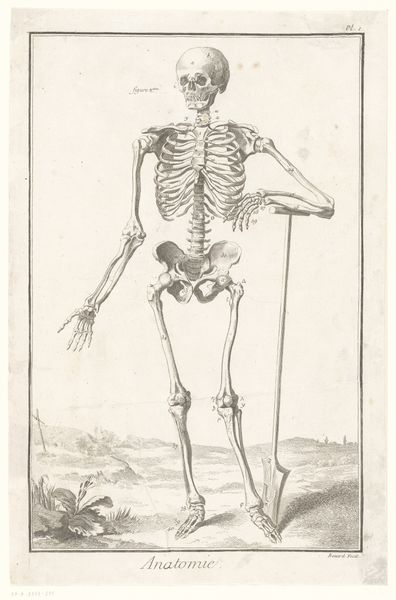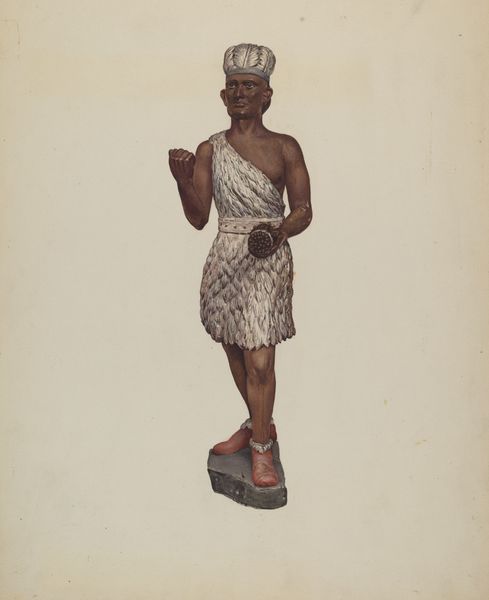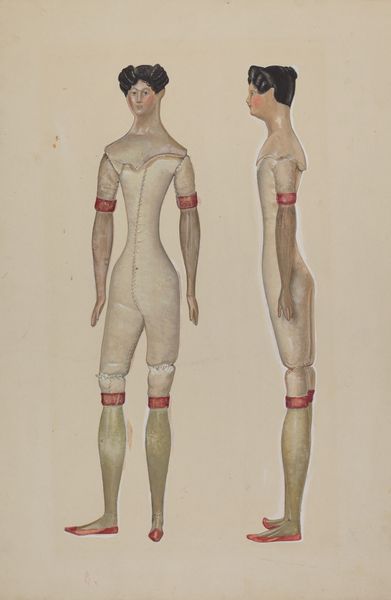
drawing, watercolor, sculpture, wood
#
drawing
#
charcoal drawing
#
figuration
#
watercolor
#
sculpture
#
wood
#
watercolor
Dimensions: overall: 36.7 x 29 cm (14 7/16 x 11 7/16 in.) Original IAD Object: 5'high
Copyright: National Gallery of Art: CC0 1.0
Curator: Before us, we have Majel G. Claflin's "Wooden Christo, Painted (Front view)", created around 1937, rendered in watercolor and drawing over wood. The artist has deftly combined sculpture and drawing media to create this evocative composition. Editor: My immediate impression is one of profound melancholy, almost starkness. The blood is striking, yet the color palette remains muted. I wonder what this contrast signifies? Curator: I find the deliberate flatness of the painted rendering noteworthy, particularly given the sculptural form. Notice how the artist doesn't attempt to disguise the woodenness; rather, they emphasize it with distinct planar shifts and delineated edges. Semiotically, this draws attention to the artifice of the representation itself. Editor: Indeed. It seems to deliberately invoke traditional Spanish Colonial religious folk art-- Santos carvings-- where the material itself possesses spiritual weight. The figure of Christ becomes more accessible, almost humble in its materiality. It pulls you into a very old tradition of embodying faith through wooden sculpture. Curator: Precisely. This tension underscores a critical element of Claflin's methodology. She is aware of tradition, but she deliberately invokes flatness and an expressive awkwardness that seems purposefully modern. It eschews purely naturalistic representation. Editor: The bloodied wounds—almost calligraphic in their application—are hard to ignore. They're less about literal depiction and more about emotional evocation, calling forward centuries of artistic expression surrounding suffering and sacrifice within this religious framework. It’s very raw in emotional intensity. Curator: True, and notice the near geometric nature of the torso. She’s stripping it down, removing embellishment and superfluous detail in order to foreground the very core, if you will, of both Christ and art. Editor: Well, thinking about the broader arc of religious iconography, one can't help but feel moved by how Claflin engages with familiar motifs of Christian art but makes this symbolic image intensely human. Curator: So, we've traversed from a structural perspective, analyzing composition, line and the treatment of planar surface to see something deeply evocative with resonances throughout centuries of religious belief and the rendering thereof. Editor: Quite so. I leave contemplating how this image acts as both artifact and intensely personal expression, a convergence which resonates powerfully even today.
Comments
No comments
Be the first to comment and join the conversation on the ultimate creative platform.
